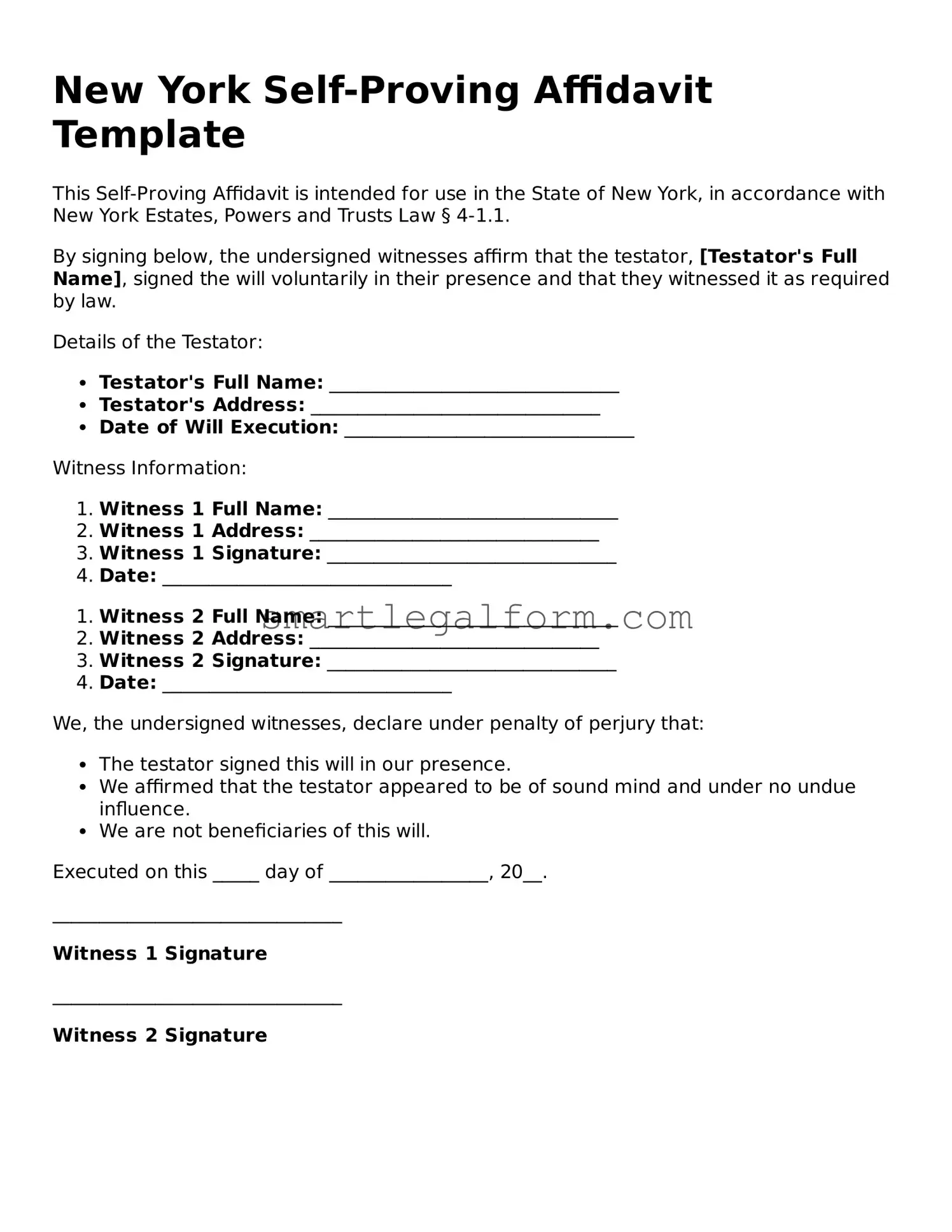New York Self-Proving Affidavit Template
This Self-Proving Affidavit is intended for use in the State of New York, in accordance with New York Estates, Powers and Trusts Law § 4-1.1.
By signing below, the undersigned witnesses affirm that the testator, [Testator's Full Name], signed the will voluntarily in their presence and that they witnessed it as required by law.
Details of the Testator:
- Testator's Full Name: _______________________________
- Testator's Address: _______________________________
- Date of Will Execution: _______________________________
Witness Information:
- Witness 1 Full Name: _______________________________
- Witness 1 Address: _______________________________
- Witness 1 Signature: _______________________________
- Date: _______________________________
- Witness 2 Full Name: _______________________________
- Witness 2 Address: _______________________________
- Witness 2 Signature: _______________________________
- Date: _______________________________
We, the undersigned witnesses, declare under penalty of perjury that:
- The testator signed this will in our presence.
- We affirmed that the testator appeared to be of sound mind and under no undue influence.
- We are not beneficiaries of this will.
Executed on this _____ day of _________________, 20__.
_______________________________
Witness 1 Signature
_______________________________
Witness 2 Signature
